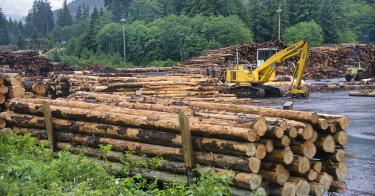Despite lumber prices soaring to a record high of $1,670.50 per thousand board feet, and the housing market booming at a 17.2% price increase from April 2020, the U.S. Commerce Department, rather than helping, plans to impose further burdens on U.S. consumers through increased taxes on imported softwood lumber.
On Friday, the Department of Commerce announced its proposal to more than double tariffs on Canadian softwood lumber to 18.32%, from 8.99%. This dramatic increase, while not yet in effect, creates uncertainty and fear, while simultaneously undermining economic prospects for both the United States and Canada as these countries attempt to recover from the COVID-19 pandemic.
So, what exactly does this proposed tariff mean for both U.S. consumers and producers? To put it clearly and in the words of Mary Ng, Canadian minister of small business, export promotion and international trade:
U.S. duties on Canadian softwood lumber products are a tax on the American people. They make housing less affordable for Americans and hinder economic recovery from the COVID-19 pandemic.
Surprisingly, this past year, the ongoing pandemic has triggered construction and increased the demand for houses, resulting in a steep rise in the demand for lumber and wood products—significantly outweighing its supply. One solution to alleviating this strain on the lumber market would have been to allow more free trade with our northern neighbor. Knocking down any barriers to trade such as a tariff would, in effect, decrease the price of softwood lumber to its more accurate equilibrium price.
The international and global supply of lumber would effectively meet the domestic demand. Not only does free trade between countries mean lower prices of goods, but also, free trade leads to greater political stability, higher average national income per capita, and healthier environments.
Instead, the Biden administration is planning on imposing a large tariff increase that will “further exacerbate the nation’s housing affordability crisis, put even more upward pressure on the price of lumber and force millions of U.S. homebuyers and lumber consumers to foot the bill for this ill-conceived protectionist action,” said Chuck Fowke, chairman of the National Association of Home Builders.
Not surprisingly, Jason Brouchu, co-chair of the U.S. Lumber Coalition and president of the Pleasant River Lumber Company, applauded the tariff as a way of leveling the “playing field… for continued investment and growth for U.S. lumber manufacturing.”
Typically, special interest groups who benefit from tariffs—in this case domestic lumber plants—strongly advocate for a protectionist policies that allow them to charge higher prices for their products by throttling their competition. A few companies may benefit, but Americans at large will foot the bill.
This piece originally appeared in The Daily Signal.



